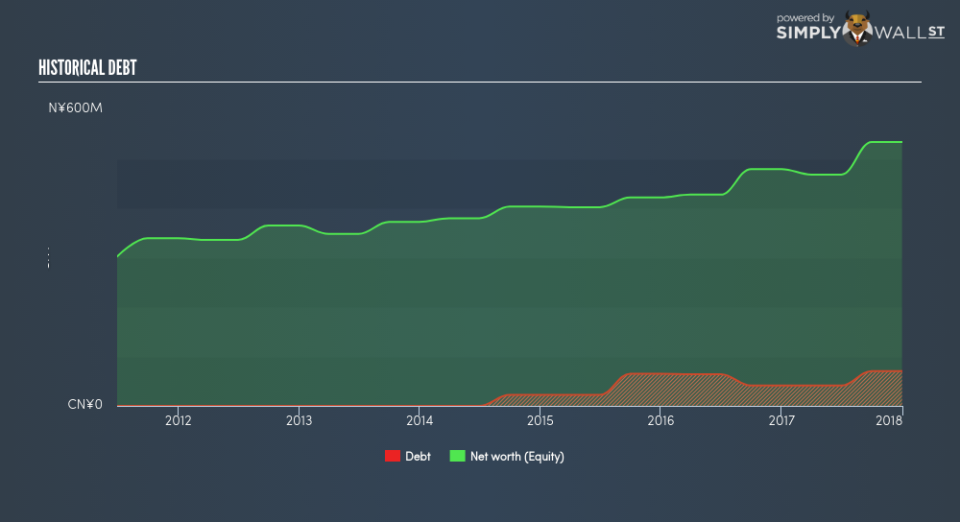Are Tang Palace (China) Holdings Limited’s (HKG:1181) Interest Costs Too High?

Tang Palace (China) Holdings Limited (HKG:1181) is a small-cap stock with a market capitalization of HK$1.82b. While investors primarily focus on the growth potential and competitive landscape of the small-cap companies, they end up ignoring a key aspect, which could be the biggest threat to its existence: its financial health. Why is it important? Assessing first and foremost the financial health is crucial, since poor capital management may bring about bankruptcies, which occur at a higher rate for small-caps. I believe these basic checks tell most of the story you need to know. However, I know these factors are very high-level, so I suggest you dig deeper yourself into 1181 here.
How does 1181’s operating cash flow stack up against its debt?
1181’s debt levels surged from HK$41.04m to HK$70.55m over the last 12 months , which is mainly comprised of near term debt. With this rise in debt, the current cash and short-term investment levels stands at HK$433.80m , ready to deploy into the business. Moreover, 1181 has generated HK$187.96m in operating cash flow over the same time period, resulting in an operating cash to total debt ratio of 266.43%, meaning that 1181’s operating cash is sufficient to cover its debt. This ratio can also be interpreted as a measure of efficiency as an alternative to return on assets. In 1181’s case, it is able to generate 2.66x cash from its debt capital.
Can 1181 meet its short-term obligations with the cash in hand?
Looking at 1181’s most recent HK$346.69m liabilities, the company has maintained a safe level of current assets to meet its obligations, with the current ratio last standing at 1.77x. For Hospitality companies, this ratio is within a sensible range since there is a bit of a cash buffer without leaving too much capital in a low-return environment.
Is 1181’s debt level acceptable?
1181’s level of debt is appropriate relative to its total equity, at 13.21%. 1181 is not taking on too much debt commitment, which can be restrictive and risky for equity-holders.
Next Steps:
1181’s high cash coverage and low debt levels indicate its ability to utilise its borrowings efficiently in order to generate ample cash flow. Furthermore, the company will be able to pay all of its upcoming liabilities from its current short-term assets. This is only a rough assessment of financial health, and I’m sure 1181 has company-specific issues impacting its capital structure decisions. I suggest you continue to research Tang Palace (China) Holdings to get a more holistic view of the stock by looking at:
Future Outlook: What are well-informed industry analysts predicting for 1181’s future growth? Take a look at our free research report of analyst consensus for 1181’s outlook.
Valuation: What is 1181 worth today? Is the stock undervalued, even when its growth outlook is factored into its intrinsic value? The intrinsic value infographic in our free research report helps visualize whether 1181 is currently mispriced by the market.
Other High-Performing Stocks: Are there other stocks that provide better prospects with proven track records? Explore our free list of these great stocks here.
To help readers see pass the short term volatility of the financial market, we aim to bring you a long-term focused research analysis purely driven by fundamental data. Note that our analysis does not factor in the latest price sensitive company announcements.
The author is an independent contributor and at the time of publication had no position in the stocks mentioned.

 Yahoo Finance
Yahoo Finance 
